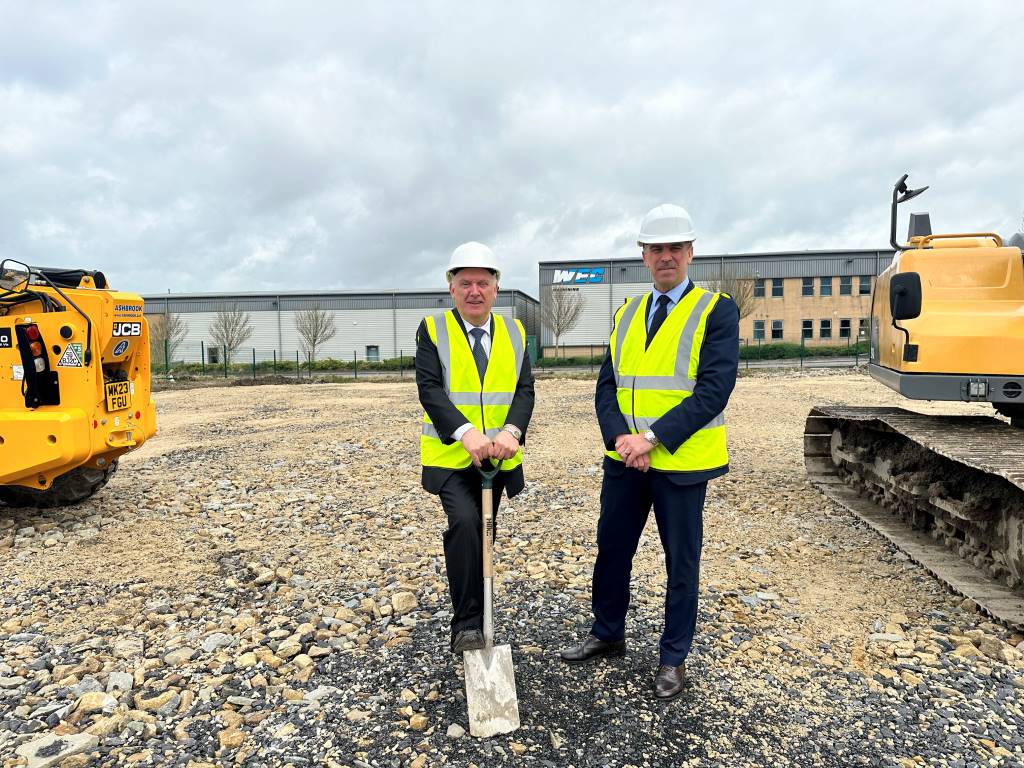Why 5G is key to post-pandemic recovery in manufacturing

By Neli Ivanova, head of sales, asset finance at Siemens Financial Services in the UK
Over the past two years the world has had to adapt to a new way of living. The pandemic has changed the way we approach nearly everything in our daily lives, and the effects on the global economy have been far reaching and unpredictable.
For manufacturers, disruptions to supply chains and factory throughputs have forced a rethink in the way they do business, with many now turning with renewed interest to 5G enabled, smart factory initiatives to enhance productivity and provide much needed agility as the sector enters a period of recovery.

Smart factories are on course to become the factories of the future, and interest in Industry 4.0 initiatives has increased dramatically as manufacturers search for emerging technologies that can play a central role in their post-pandemic recovery. According to a recent survey, 52% of businesses say that the pandemic has increased their organisation’s interest in 5G and IoT. Likewise 73% of manufacturers are planning to increase their investment in the new technology in the coming years.
In the UK the infrastructure required for 5G is already available in 104 major towns and cities via at least one mobile operator, and coverage is expected to rapidly improve. Industrial use cases also reflect the growing emergence of the network, for instance, one international automotive manufacturer has recently worked on a project with a multinational telecommunications company to implement a private mobile network at their facility in the East of England.
Along with the build-up of infrastructure, the UK Government has also taken steps to foster the technology’s usage, with its Industrial 5G Testbed and Trials programme (funded by the Department of Digital, Culture, Media and Sport) offering manufacturers the opportunity to trial use cases and map out a route for large scale adoption.
Rapid speeds and no latency
Of course, the modern factory is already a highly complex and digitalised environment, with advanced machines and robotics present in nearly every aspect of the manufacturing process. What 5G adds is significantly greater speeds, 10 to 20 faster than its predecessors 4G and LTE (Long-Term Evolution), and near-zero latency, making the process of digitalisation much faster and more reliable.
When compared with the new generation of Wi-Fi, ‘Wi-Fi 6’, 5G is much better suited to large scale deployment across wide areas – like a factory floor for example. Thanks to its higher bandwidth and massive machine-type communication, a higher density of low-powered devices requiring little to no human intervention can be deployed on the network, like a fleet of warehouse robots for example. It also offers superior reliability and end-to-end security, as well as being more cost efficient per square foot than Wi-Fi, where the total cost is on average 22% higher.
The technology consequently has the capacity to accelerate Industry 4.0 initiatives, bringing the benefits of cost-efficiency and increased productivity, as well as the flexibility needed by manufacturers to face shifting demand and labour shortages with agile production processes, a necessity highlighted by the pandemic. In fact, research conducted among global manufacturing companies suggests that those who had already taken steps to integrate Industry 4.0 use cases into their infrastructure, found themselves much more able to withstand the challenges of the pandemic.

Specifically, 94% of respondents said that Industry 4.0 had helped them to keep their operations running during the pandemic, while more than half emphasised how new technology played a critical part in their crisis response.
This is unsurprising given that the shutdown of manufacturing sites and the disruption in raw material supply can be intelligently prepared for by building a digital twin of an enterprise’s supply chain. These can then be used to run predictive scenarios during the pandemic, while new manufacturing lines can be commissioned using augmented reality-based remote assistance.
Other benefits include easy integration with existing factory infrastructure, enabling the remote control of factory processes and the liberation of staff from fixed computer terminals. This subsequently leads to a considerably safer manufacturing environment due to fewer personnel being needed on the floor coupled with smart sensors able to quickly detect hazards with a near-instantaneous response time.
Part of the plan
Preventative maintenance is another key feature made possible from improved sensory technology and faster speeds. Consider the experience of a manufacturer without a 5G-enabled factory, who might endure a complicated production process with an error rate of up to 25%. Through smart factory initiatives, sensors capable of detecting potential faults in real-time would be installed, connected by a 5G network, which would be able to significantly reduce the error rate, cost, and wastage in production.
5G is just one aspect of Industry 4.0 that promises to play a key role in the creation of the factories of the future. In order to reap the full benefits of the ‘smart’ revolution manufacturers must recognise digitalisation and automation as integral parts of their plans for investment.
With the operational and financial efficiencies generated by these technologies integrated into a business model, manufacturers who embrace them can obtain a significant competitive advantage over those who don’t. In fact, despite the pandemic causing a fall in growth trajectories of overall global economic output – sales enabled by 5G are predicted to reach $13.1T by 2035. It is clear from these estimations that late adopters of this new technology will miss out on the many potential organisation and financial gains, yet the window of opportunity to invest and gain a competitive advantage is limited.
For smaller companies who must utilise every possible advantage they can get, 5G integration and digitalisation should be the first thought when planning long and short term strategies. If a lack of technical or practical knowledge is a barrier to investment then these companies can take advantage of government backed schemes that aim to provide a pathway to adoption, including the previously mentioned government Testbed and Trials programme.
Smart industry requires smart finance
Nonetheless some manufacturers may still be put off by the cost of implementation, which will depend on the size of the factory and the extent to which 5G and Industry 4.0 initiatives can be integrated into the existing infrastructure. It is a complex task and one that is not necessarily fully understood by generalist financiers. It is not surprising therefore that a lack of funding is considered by manufacturers to be the biggest constraint to the implementation of Industry 4.0 initiatives, and the selection of the right finance partner must be an essential part of any strategy regarding the implementation of 5G and Industry 4.0 initiatives. This problem, and its solution can be summed up very simply: smart industry requires smart finance.

Smart financing solutions tend to be offered by specialist financiers who understand the technology, its applications, and the role it occupies in the existing market. Using this expertise, they are able to create financing models based around achievable goals and realistic business outcomes for the manufacturer, affording a much greater ability to adapt rapidly to the challenges of the market.
Smart financing techniques help to manage a manufacturer’s cash flow by reducing the amount of working capital needed for up-front investment, and by offering repayment schemes aligned to the expected rate of return-on-investment delivered through new technologies and equipment, or to the expected cost saved due to the increased efficiency.
Increased productivity, cost efficiency, agility, and reduced emissions: these are just some of the benefits that await manufacturers who successfully take advantage of 5G as part of a digitalised factory and get in ahead of the smart factory revolution.
While the cost of financing such an upgrade may at first appear daunting, smart finance offers a route to investment that doesn’t require the use of precious capital. This presents manufacturers with the opportunity to take meaningful steps in realising the factories of the future, without delay.
Siemens Financial Services
https://new.siemens.com/uk/en/products/financing.html














